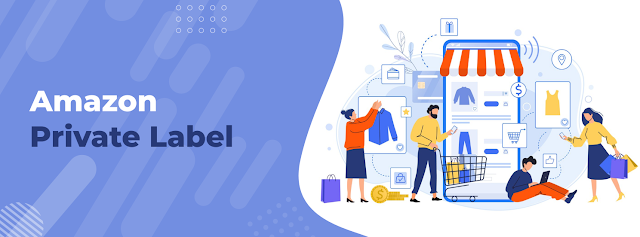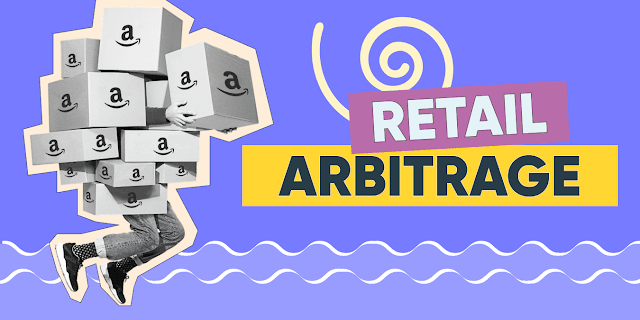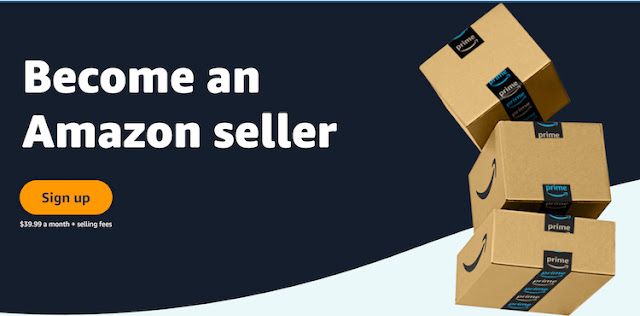Make Money on Amazon in 2023: 15 Top Methods
Introduction
The biggest online market in the world, Amazon, continues to provide significant company and personal earning options. Amazon provides several opportunities for business owners to make money because of its enormous client base, broad range of products, and solid infrastructure. In this essay, we'll examine 15 effective ways to monetize your Amazon account in 2023. These techniques will enable you to take advantage of Amazon's enormous potential whether you're an individual wishing to start a side company or an experienced business owner seeking extra cash streams.
1. Selling Private Label :
 |
| Selling Private Label |
products are one of the most well-liked methods of making money on Amazon. You obtain goods from producers through private labeling, customize them under your brand, and market them on Amazon. Utilizing Amazon's fulfillment services (FBA), you can concentrate on marketing and brand expansion while Amazon takes care of shipping, packing, and storage.
Product research:
By doing in-depth market research, find a lucrative niche. Search for items with strong demand, little rivalry, and healthy profit margins. Utilise software such as AMZScout, Helium 10, or Jungle Scout to examine trends, competition, and sales data.
Source Your Products:
Locate trustworthy suppliers or manufacturers who can create the things you want. Depending on your budget and the products you need, you can think about sourcing from China, India, or the United States. You may find suppliers by using websites like Alibaba, and Global Sources, or by going to trade exhibitions.
Customize Your Brand:
Come up with a memorable brand name, logo, and packaging concept that appeals to your target market. Make your items stand out from the competition by emphasizing special qualities, extra value, or distinctive characteristics. Consistent branding should be applied to all touchpoints.
Quality Control:
Prior to sending your goods to Amazon's fulfillment facilities, undertake quality control inspections to make sure they adhere to your standards. Examine samples, ask your manufacturer for product samples, and, if required, think about hiring a third party to do inspections.
Create a seller account:
Create a Seller Central account on Amazon.com. Depending on the number of items you want to sell, select either an Individual or Professional selling plan. Pay close attention to the account setup, vendor fees, and verification criteria.
Listing Creation:
Create enticing product listings that showcase the characteristics, advantages, and distinctive selling aspects of your private-label goods. To increase exposure and organic ranking, optimize the titles, descriptions, and keywords for your products. Increase the attractiveness of the listing by including high-quality product photographs and videos.
Inventory Management:
Choose whether to outsource fulfillment to a third party or utilize Amazon's FBA (Fulfilment by Amazon) service. By handling storage, packing, and shipping, Amazon is able to offer a smooth consumer experience. To prevent stockouts or surplus inventory, forecast and manage your inventory.
Marketing & Promotion:
Use powerful marketing techniques to promote your private label items and increase sales. Increase exposure and conversion rates by using Amazon PPC (Pay-Per-Click) advertising, social media marketing, influencer partnerships, email marketing, and content marketing.
Keep in mind that selling private label goods on Amazon involves commitment, perseverance, and ongoing market dynamics adaption. To increase your chances of success, keep up with market changes, customer preferences, and Amazon's policies. Selling private label goods on Amazon may help you establish a successful company and bring in sizable revenue.
2. Retail Arbitrage:
Purchasing things at a discount from physical stores and reselling them on Amazon for a greater price is known as retail arbitrage. To find lucrative products using this strategy, rigorous product research and an awareness of market trends are necessary.

Retail Arbitrage
Research:
Use Amazon's market research tools to find lucrative product segments or categories. Consider purchasing items with steady demand, better selling prices, and a respectable sales rank. You may examine past product sales data and pricing patterns using programmes like Jungle Scout, and Keepa.
Establish a Budget:
Choose the maximum amount of money you may spend on stock purchases. Your ability to pay for it and your level of risk tolerance will determine this. Start with a small budget, and as your firm grows, progressively reinvest the proceeds.
Source items:
To locate items at lesser costs, visit nearby retail establishments, such as discount shops, liquidation warehouses, thrift shops, or even internet marketplaces. Look for things that are on sale, clearance items, or seasonal deals. To make sure there is a reasonable profit margin, compare the selling price on Amazon to the retail price.
Assessing Profitability:
Determine the possible profit for each product by taking into account the purchase price, any fees charged by Amazon (including referral fees and FBA fees), the cost of delivery, and the expected selling price. In order to calculate your net profit per item, deduct these costs.
Condition and Quality Check:
Before making a purchase, examine the items' state and quality. Make sure the products are brand new, in excellent shape, and adhere to Amazon's selling requirements. Products with broken packaging, impending expiration dates, or potential legal limitations should be avoided.
3. Internet Arbitrage:
Online arbitrage is the practice of purchasing inexpensive goods from Internet merchants and reselling them on Amazon. Online arbitrage provides a greater selection of product possibilities and enables more effective business scaling.
Find Online Retailers:
Look for online shops that provide discounts, promotions, or clearance deals, both big and specialized. Walmart, Target, Best Buy, and other department shops are common choices. Additionally, look at specialized websites and smaller online shops because they can offer interesting discounts.
Price comparison:
Examine the differences between these online merchants' product pricing and Amazon's selling prices. To determine the possible profit margin for each item, put in extra elements like shipping costs and Amazon fees (including referral payments and FBA fees).
Analyse Profitability:
Subtract the purchase price, Amazon fees, and any other costs (such as shipping or prep fees) from the anticipated selling price to determine the predicted profit for each good. Make sure the profit margin is high enough to justify the investment.
4. Quality Control:
Prior to sending your goods to Amazon's fulfillment facilities, undertake quality control inspections to make sure they adhere to your standards. Examine samples, ask your manufacturer for product samples, and, if required, think about hiring a third party to do inspections.
Choose Reputable Manufacturers or Suppliers:
Pick manufacturers or suppliers with a reputation for creating high-quality goods. Do extensive research, ask for samples, and look for accreditations or quality assurance procedures. Maintaining constant product quality requires forging strong connections with dependable suppliers.
Establish Quality Standards:
Specify the requirements for each product you sell on Amazon, as well as your own quality standards. To ensure that your vendors understand your expectations, make sure to convey these criteria in clear terms. This covers features including product design, usability, labeling, packaging, and any particular certifications or laws.
Pre-production inspections
Pre-production inspections should be carried out to guarantee that the initial samples or prototypes adhere to your quality requirements. Prior to starting mass production, this stage enables you to address any possible problems or make any necessary adjustments.
Implementing in-production inspections
will allow you to keep an eye on quality throughout the production process. These checks assist in locating any production flaws or variations early on and correcting them to avoid more serious problems later. To remain up to speed on the status and quality control procedures followed, ask your suppliers for updates often.
Perform Pre-Shipment Inspections:
Before products are shipped to Amazon's fulfillment centers, conduct pre-shipment inspections. These inspections involve randomly selecting samples from the production batch and thoroughly assessing them for quality, functionality, and adherence to your specifications. This step helps catch any potential issues before they reach customers.
Test Functionality and Performance:
For certain products, especially electronic devices or complex items, conduct functional tests to ensure they meet performance requirements. This can involve checking key features, verifying technical specifications, or using specialized testing equipment. Testing for compliance with safety standards or regulatory requirements may also be necessary, depending on the product category.
Continuous Improvement:
Regularly evaluate and improve your quality control procedures. Create feedback loops with your suppliers to address any persistent problems and work together on developing solutions. To keep your items competitive in the market, stay up to speed on industry standards, product laws, and consumer expectations.
Collaboration with Third-Party Inspection Services:
As a way to strengthen your quality control efforts, think about collaborating with third-party inspection services. These independent inspection firms offer comprehensive inspections, laboratory testing, and certification services. In order to guarantee product quality and compliance, they provide unbiased assessments and knowledge.
You may build a reputation for selling high-quality items on Amazon by putting in place effective quality control methods. Positive customer reviews, greater sales, and long-term success for your Amazon business will all result from consistently providing customers with goods that meet or exceed their expectations.
5. Create a seller account:
Create a Seller Central account on Amazon.com. Depending on the number of items you want to sell, select either an Individual or Professional selling plan. Pay close attention to the account setup, vendor fees, and verification criteria.

Create a seller account
6. Publish eBooks on Kindle:
If you have a knack for writing, you might want to consider self-publishing eBooks on Kindle. You may reach millions of readers worldwide with Amazon's Kindle Direct Publishing (KDP) program and make money from every transaction.
7. Merch by Amazon:
With Merch by Amazon, you can create and sell personalized clothes and goods without worrying about keeping track of inventory or delivery costs. Create original designs, submit them to Amazon, and receive royalties for each sale.
8. Amazon FBA Wholesale:
FBA wholesale on Amazon entails acquiring goods in bulk from licensed wholesalers and reselling them there. To use this strategy, you must build trusting connections with your suppliers and keep your supply chain stable.
9. handcrafted Products on Amazon Handmade:
If you're a maker or artist, Amazon Handmade offers a platform for you to market and sell your one-of-a-kind handcrafted products. Customers looking for one-of-a-kind products may find and buy your creations, which range from jewelry to home décor.
10. Become an Amazon Affiliate:
Become an Amazon associate to promote items on your website and social media channels in exchange for a commission. You get a share of the sale when a consumer clicks on your affiliate link and buys something.
11. Kindle Direct Publishing (KDP) Print:
In addition to eBooks, Kindle Direct Publishing (KDP) Print enables you to create paperback books on your own. Increase your audience by providing readers who prefer tangible books with actual copies of your writing.
12. Amazon Mechanical Turk:
Micro jobs are offered by Amazon Mechanical Turk (MTurk) for anyone searching for short ways to get money. These assignments might be as simple as questionnaires, data validation, or content control.
13. Amazon Handmade - Custom Orders:
Using Amazon Handmade's custom order function, you may make goods that are specifically tailored to the needs of customers. You can do this in order to express your originality and satisfy different tastes.
14. Become a Virtual Assistant:
A lot of Amazon sellers need help with things like listing optimization, inventory management, and product research. To aid these vendors in streamlining their business practises, offer your assistance as a virtual assistant.
15. Launch a Subscription Box:
Subscription boxes have been more and more well-liked recently. Create a special product selection and provide a subscription-based service on Amazon to enable clients to easily acquire handpicked goods on a regular basis.
Amazon Influencer Programme: You are eligible to apply if you have a sizable online audience and influence.



.jpg)
0 Comments